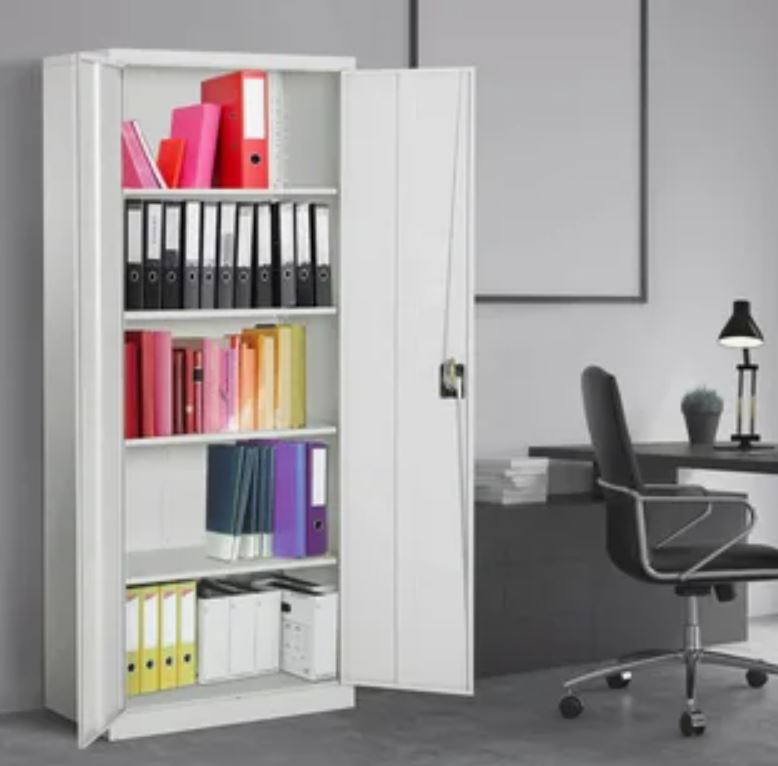In the digital age, where cloud storage and hard drives dominate conversations about document management, the importance of physical filing systems like the vertical file should not be underestimated. Vertical files are tall, narrow cabinets with deep drawers, usually designed to accommodate standard-size documents such as letter or legal-sized papers. These file cabinets are a staple in many offices and home workspaces for a good reason—they offer a practical, efficient, and space-saving solution for organizing essential documents. The vertical file allows users to access documents quickly without having to rummage through piles of paperwork. Their upright design helps save floor space, which is ideal for offices that want to maintain a neat and compact environment. Despite the rise in digital storage solutions, physical document filing remains crucial in industries such as legal, healthcare, finance, and education, where paper records still play a prominent role in daily operations.
Benefits of Using Vertical File Cabinets in Professional Settings
One of the main advantages of a vertical file cabinet is its ability to maximize vertical storage without consuming much horizontal space. Offices that deal with a high volume of paperwork often find vertical files useful because they allow for systematic filing of documents by categories such as date, department, client, or project. This not only enhances productivity but also minimizes the chances of misplacing important records. Vertical files often come with built-in locking mechanisms, providing an added layer of security for confidential documents. In a world where data protection is a high priority, this feature is particularly valuable. Additionally, these cabinets are usually made of sturdy materials like metal or reinforced plastic, making them durable and capable of withstanding years of heavy use. Their drawer systems are designed for smooth operation and can support the weight of hundreds of folders, making them a dependable long-term investment for any office.
Vertical File Systems Enhance Office Organization and Workflow
A well-organized office translates to increased efficiency and less stress for employees. Vertical file systems contribute significantly to creating a streamlined workflow. Instead of wasting time searching for a document in a chaotic pile, employees can access what they need in seconds if files are clearly labeled and sorted in a vertical file. These systems encourage the implementation of best practices such as color-coded tabs, alphabetical or numerical sorting, and periodic audits to maintain order. This structure helps in reducing document duplication, avoiding overlooked files, and ensuring timely decision-making. Even in hybrid or remote working environments, a central vertical file cabinet located in the main office can serve as a reliable point of reference for shared physical documents. This ensures consistency across departments and helps maintain continuity in collaborative projects.
Design Variations and Customization Options for Vertical File Cabinets
Vertical file cabinets are not one-size-fits-all. They come in a wide range of styles, sizes, colors, and materials to meet diverse business needs and interior aesthetics. While traditional four-drawer vertical files are popular in corporate offices, two-drawer models are often favored for home use or small business setups due to their compact size. Some models feature fire-resistant materials, while others include wheels for easy mobility. Customization options such as label holders, additional security features, or built-in digital tracking systems make vertical files more adaptable and user-friendly. Ergonomic features like easy-glide drawers and anti-tip mechanisms further enhance user experience. Whether you’re managing tax files, client contracts, academic records, or employee data, there’s a vertical file cabinet suited to your specific requirements. Businesses should evaluate their filing volume, frequency of document retrieval, and the nature of stored content when selecting the right model.
Digital Integration with Traditional Vertical File Storage
Though digital tools have revolutionized data management, vertical file systems still offer a tangible sense of organization that many professionals prefer. Interestingly, traditional filing methods can coexist harmoniously with digital systems. For example, offices may use vertical file cabinets to store original signed documents while maintaining scanned copies in a digital archive. QR codes or indexing tags can be placed on physical folders, linking directly to corresponding files in cloud-based systems. This hybrid approach combines the reliability of paper records with the convenience of digital access. Vertical files also serve as a backup in case of power outages or technical failures, ensuring that essential data remains accessible. By integrating physical and digital filing systems, companies can build a more robust, redundant, and efficient document management process. Training staff to manage both systems effectively can further reduce risks and enhance compliance with regulatory requirements.
Maintenance Tips to Keep Your Vertical File System Efficient
Just like any other office equipment, vertical file cabinets require regular maintenance to stay functional and efficient. Keeping the drawers clean and lubricated ensures smooth operation and prevents jams. Periodically reviewing and purging old or redundant files will free up space and keep the filing system organized. It’s advisable to establish a schedule for file audits, during which outdated documents are either archived or securely shredded.
Labeling should be clear and consistent across drawers and folders, and any misfiled documents should be corrected immediately to avoid confusion. Also, be sure to avoid overloading drawers beyond their recommended weight capacity, as this can damage the cabinet’s structural integrity and compromise drawer mechanisms. Choosing vertical files made from rust-resistant materials is also a good way to extend their lifespan, especially in environments where humidity is a concern. With the right care, a quality vertical file cabinet can remain a valuable asset for many years.
Conclusion: Why a Vertical File System Is Still Relevant Today
Even in an increasingly paperless world, the vertical file remains a practical and dependable solution for managing physical documents. Its design, space-efficiency, security features, and customizability make it an essential component of office organization. Whether you’re running a large corporate department or managing a home-based business, a vertical file cabinet can help you maintain order, increase productivity, and safeguard sensitive information. As more businesses recognize the value of hybrid storage solutions, the vertical file continues to serve as a bridge between traditional practices and modern efficiency. For those looking to invest in long-lasting and effective document storage, the brand filing cabinets offers reliable vertical file systems designed to meet the diverse needs of today’s professionals.






